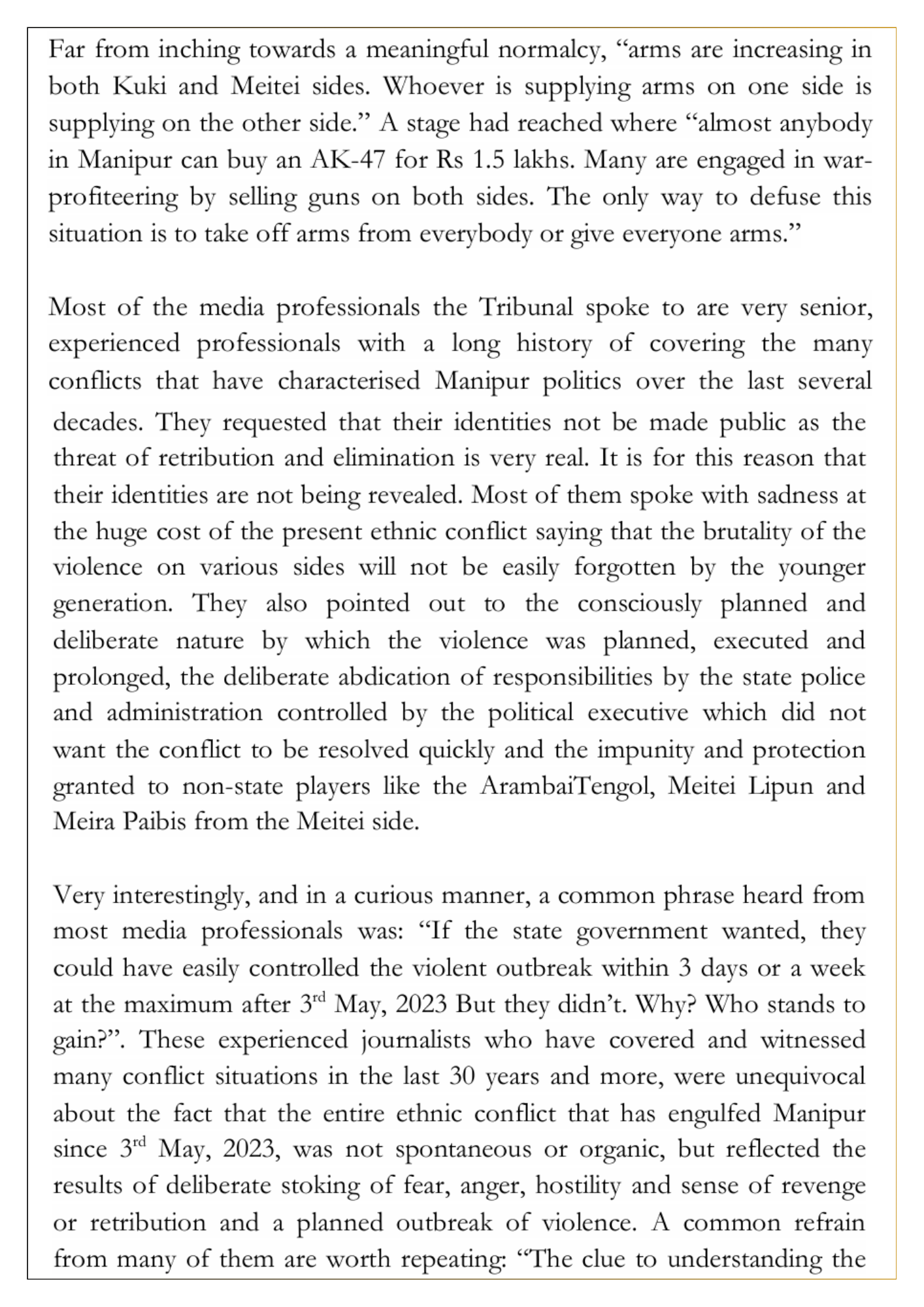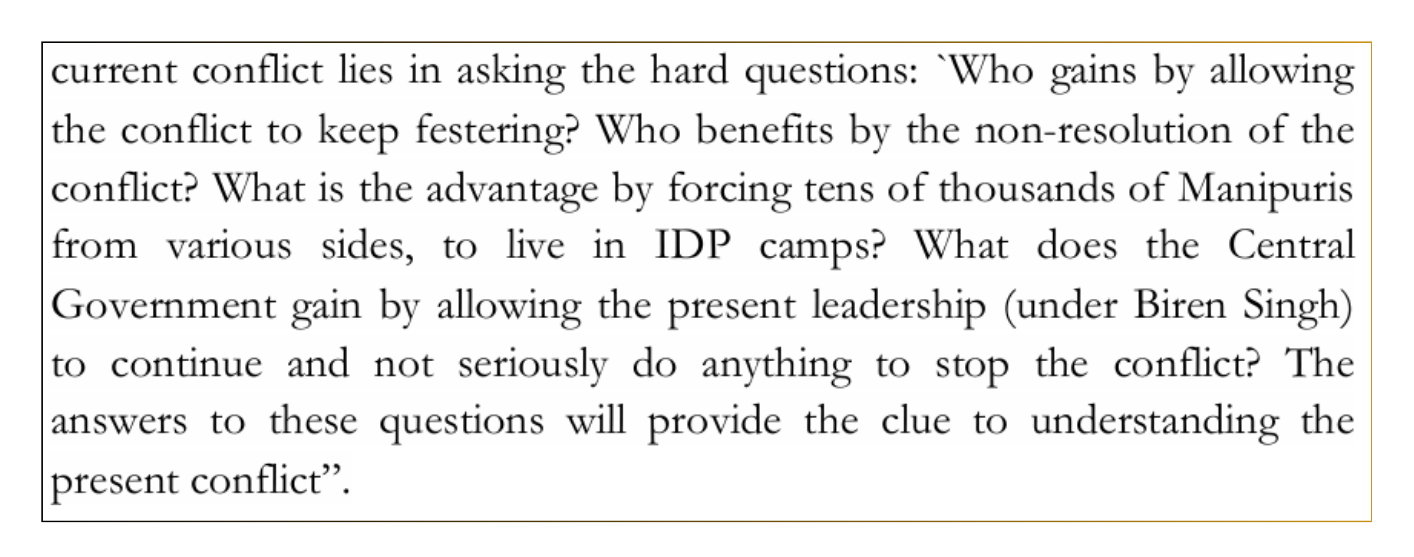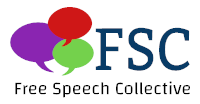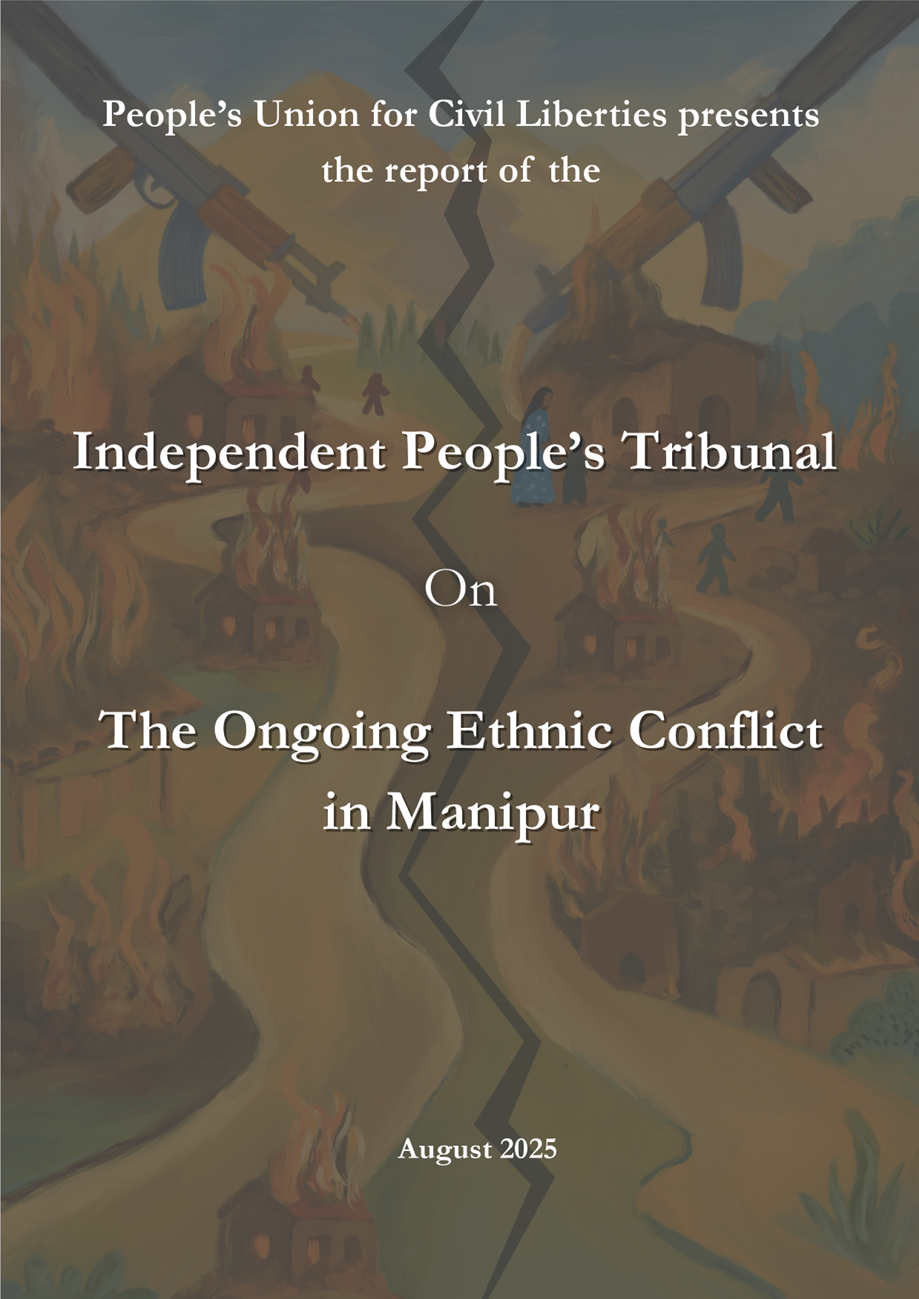In March 2024, the People’s Union for Civil Liberties (PUCL) constituted an independent people’s tribunal to investigate the May 2023 violence between Meitei and Kuki-Zo communities, tracing its roots to ethnic divisions, land disputes, and a controversial court directive on Meitei ST status. Some of the members of the Tribunal visited Manipur between May and June 2024 and held several meetings, online and offline, with affected persons as well as members of the administration and police and security personnel.
The report presents evidence that the violence was orchestrated, involving armed Meitei groups and enabled by state complicity and law enforcement failures. It documents widespread atrocities including killings, sexual violence, destruction of homes and places of worship, and the displacement of over 60,000 people. Relief efforts were discriminatory, and media coverage often fueled division rather than promoting peace. The Tribunal calls for urgent legal accountability and long-term reconciliation through independent investigations, dismantling of armed groups, reparations, and civic education.
We share here an excerpt from the report, followed by a summary of media testimonies.
Excerpt
The Manipur violence is amongst the first episodes of mass violence in India where the entire outbreak of violence can be directly traced to how incidents and events were covered by the media – both by mainstream as also the social media. Depending on the purpose for which the message was sought to be conveyed, participants, survivors, and victims were depicted to either show the actuality of an event as it played out or to spread fake news, misinformation and disinformation…
…Thus, we see how a counter-narrative is built in a logical, coordinated, planned and systematic process of dissemination of fake news over a long period of time. In the Observational Learning stage, a subconscious link started getting made between poppy cultivators and Kukis. In this stage, associations were largely anecdotal or circumstantial, usually lacking substantive proof or legitimacy. In the Priming stage, the same associations were reinforced through a series of posts that not only generalized these anecdotes to the entire population but clearly legitimized these subconscious associations and articulated them to the entire world. Therefore, the moment one heard Kuki, they were likely to immediately think of them as ‘poppy cultivators’ and ‘illegal immigrants’. The key to this stage was the constant and consistent contorting of facts to reinforce a certain narrative. In the final stage of Framing, the mistrust, hate and othering that was already established and legitimized is now normalized. Calls for urgent action to safeguard against these ‘aliens’, ‘infiltrators’ and ‘narco-terrorists’ can be safely and effectively made now. This call for action is not merely in defence but in active offense, as if any compassion or mercy might make the Meiteis vulnerable to some evil plot of the Kukis. It is behind this narrative that a renewed push towards granting ST-status to Meiteis emerged and culminated in the highly contentious High Court order of March 27th, 2023. After this, any escalation promoted by inflammatory posts from either side only added more fuel to an already towering pile of dynamite stacked over time. This was seen in the run-up of the final few weeks to the violence that erupted on 3rd May, 2023. The kind of hate-speech and dog-whistling that ran rampant on the day of the ATSUM rally finally ignited a full-scale ethnic war with which the Manipur ethnic conflict officially began.
To conclude this section, we can see how the Media Effect Theory provides a useful framework to trace the different stages of escalation and a similar pattern can be traced out in posts that went viral during and after the initial round of violence. People’s impressions of the opposing group, for instance, had been continuously shaped by media portrayals of the clashes, which would have heightened fear or hate in both groups. Fake news reports had primed people to see future events in a specific manner, which would have exacerbated the clashes. As disinformation ran rampant in the aftermath of the violence, one can see how the media continued to be weaponized to influence people’s attitudes and perceptions, provoking fresh rounds of violence (like Jiribam in June 2024) and continue to fester irreconcilable fissures within communities on geographic, ethnic, economic and political lines…







